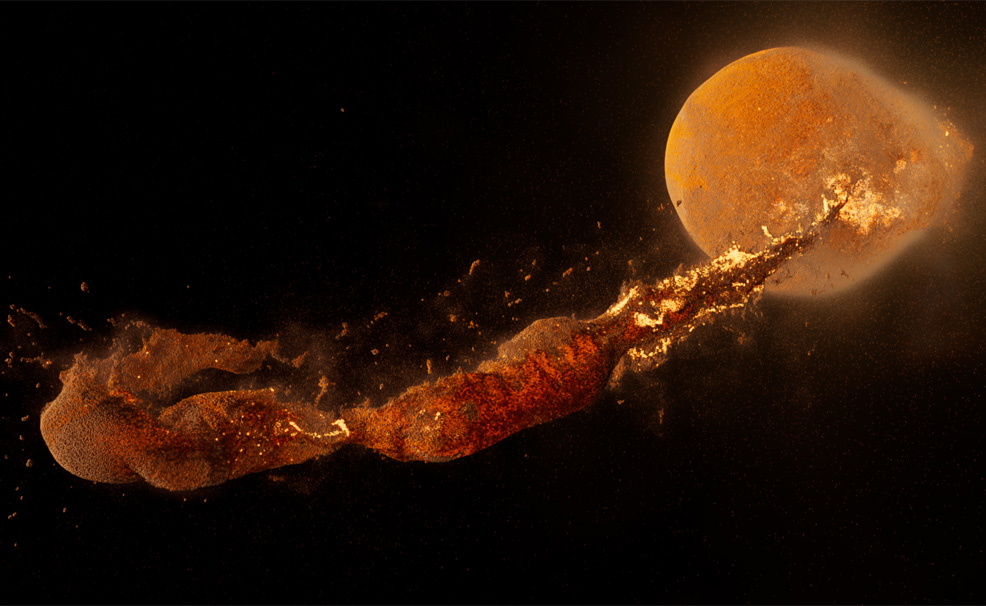
22nd October 2022 New simulation reveals Moon formed in hours A new simulation by NASA shows that the Moon likely formed within a matter of hours, as opposed to earlier theories that propose a much longer period of months or years.
Billions of years ago, a version of planet Earth that looked very different than the one we live on today was hit by an object about the size of Mars, called Theia – and out of that collision the Moon was formed. How exactly that formation occurred is a scientific puzzle researchers have studied for decades, without a conclusive answer. Until now, most theories have claimed that the Moon formed out of the debris of this collision, coalescing in orbit over months or years. However, a new simulation presents a different outcome – the Moon may have formed immediately, in a matter of hours, when material from the Earth and Theia was launched directly into orbit after the impact. "This opens up a whole new range of possible starting places for the Moon's evolution," said Jacob Kegerreis, a postdoctoral researcher at NASA's Ames Research Center in California and lead author of a paper this month in The Astrophysical Journal Letters. "We went into this project not knowing exactly what the outcomes of these high-resolution simulations would be. So, on top of the big eye-opener that standard resolutions can give you misleading answers, it was extra exciting that the new results could include a tantalisingly Moon-like satellite in orbit." The simulation used in this study is the most detailed of its kind – operating at the highest resolution of any computer model ever run to study the Moon's origins or other giant impacts. This extra computational power showed that lower-resolution simulations can miss out on important aspects of these kinds of collisions, allowing researchers to see new behaviours emerge in a way previous studies just couldn't see. The supercomputer used by the researchers calculated the individual movements and interactions of more than 100 million particles. The full duration of the simulation represents the time from a few hours before impact to 24 hours after impact.
Confirming which theory is correct will require analysis of future lunar samples brought back to Earth for study from NASA's Artemis missions. As scientists gain access to samples from other parts of the Moon and from deeper beneath its surface, they will be able to compare how real-world data matches up to these simulated scenarios, and what they indicate about how the Moon has evolved over its billions of years of history. Beyond simply learning more about the Moon, simulations like this can bring us closer to understanding how our own planet Earth became the life-harbouring world it is today. "The more we learn about how the Moon came to be, the more we discover about the evolution of Earth," said Vincent Eke, a researcher at Durham University and co-author on the paper. "Their histories are intertwined – and could be echoed in the stories of other planets changed by similar or very different collisions." Given the countless trillions of planets in the universe, impacts on the scale seen in this video are likely happening all the time, right now as you're reading this. Collisions are an essential part of how planetary bodies form and evolve. On Earth, we know that the impact with Theia and other changes throughout its history are part of how it was able to gather the materials necessary for life. The better scientists can simulate and analyse these processes, the more prepared we are to understand how a planet could evolve to be habitable like our own Earth.
Comments »
If you enjoyed this article, please consider sharing it:
|







